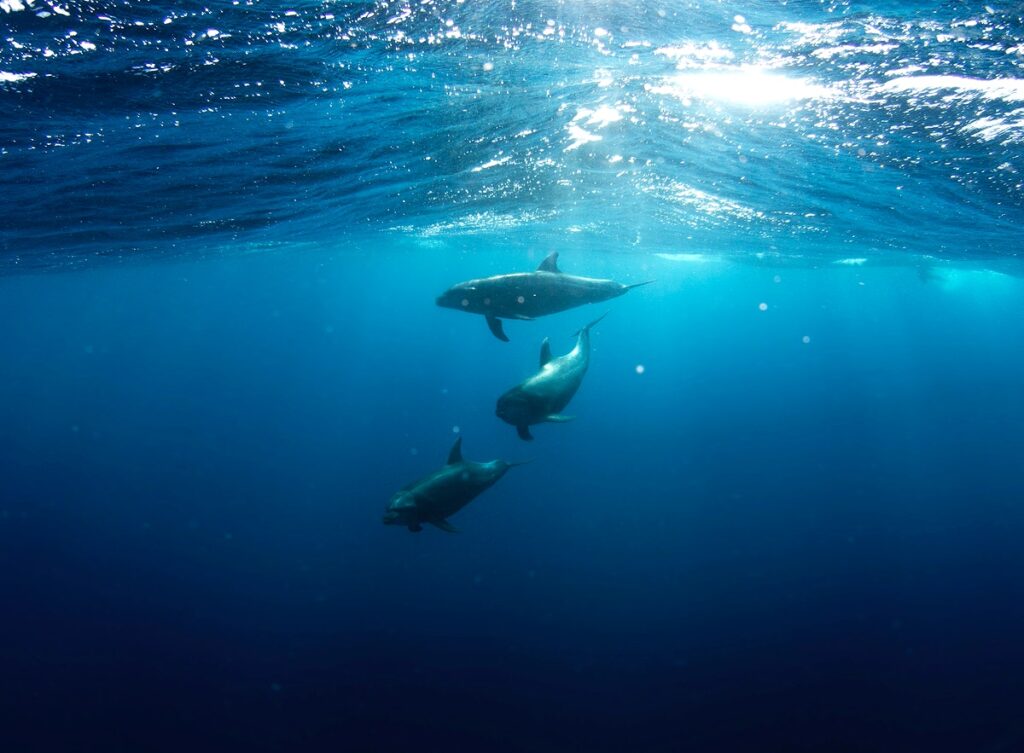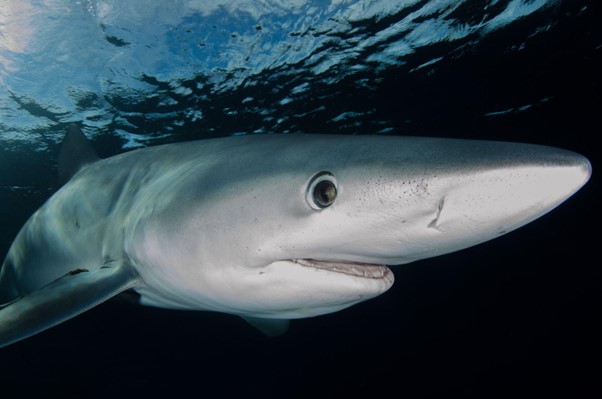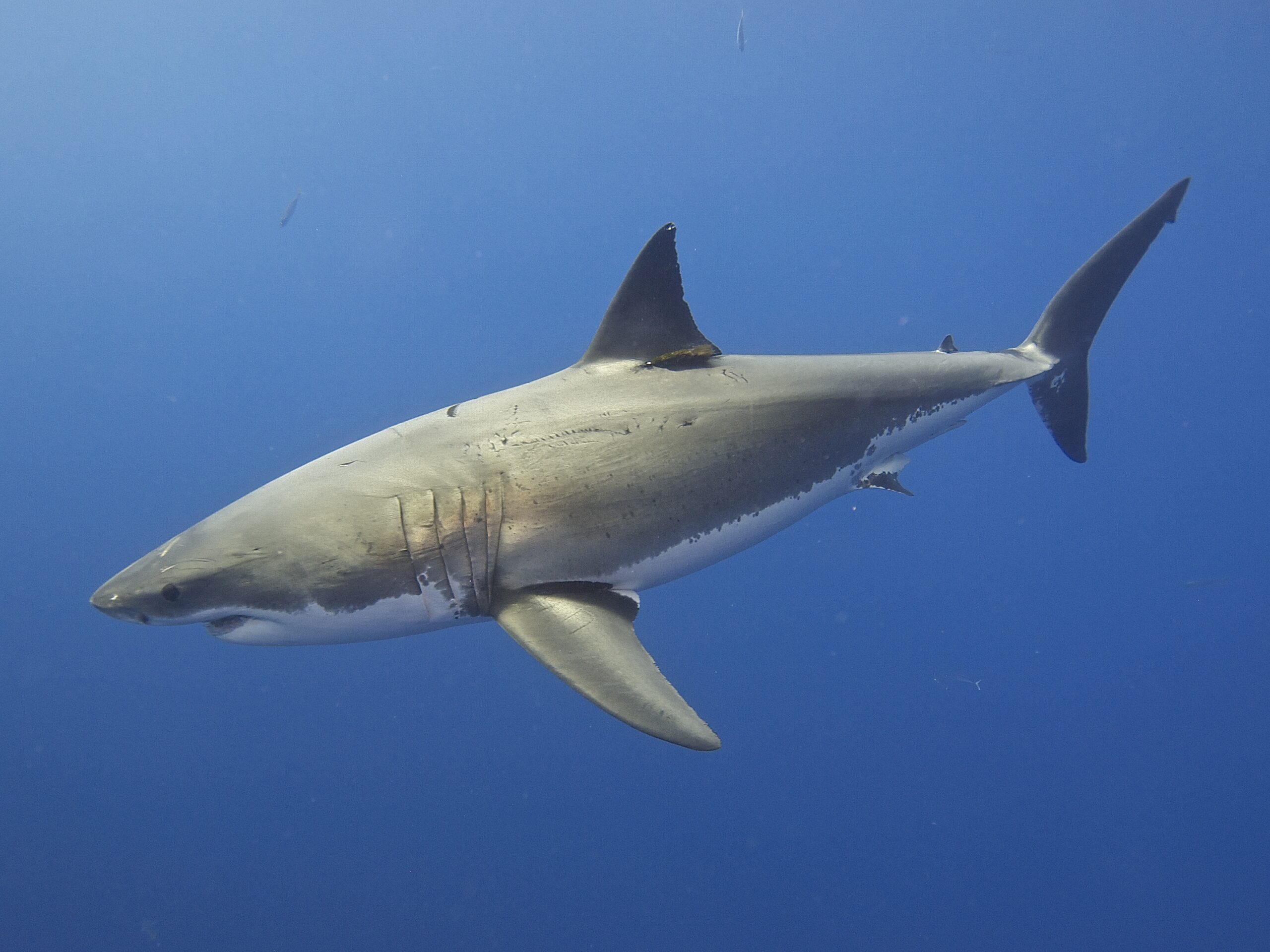Sharks are always swimming without drowning in the depths of the ocean. Ever wondered how? Well, the intelligent species of the ocean surely have special mechanisms that keep it afloat and ensure a smooth swimming experience. Let’s find out how sharks maintain buoyancy.
But first, let’s have a look at what buoyancy actually is.
What Is Buoyancy?
Buoyancy is the ability or tendency of an organism to float and rise from deep water instead of sinking or a force exerted upward by water on a body to make it float in water. The buoyant force or upthrust force is related to specific gravity and works against the force of gravity.

1: External Features Of Shark
Sharks’ body plays a great role in maintaining buoyancy. They have fusiform or torpedo-shaped bodies with dorsal and pectoral fins that accommodate them while maintaining buoyancy. Shark’s tail works like propelling force while moving. Moreover, the unique textured skin has placoid denticles on the surface through which water passes and makes sharks swim without any hydrodynamic friction.
2: Internal Features Of Shark
Sharks have acquainted some anatomical adaptations that lodge them to maintain buoyancy. Shark possesses a cartilaginous endoskeleton which is flexible and sturdy like bones but with lesser degrees of density. This makes the shark light-weighted so that it cannot get sunk deep in the ocean. The liver is the main internal organ that has been specialized for buoyancy. Shark’s liver is about 25% of the entire body weight. Scroll down for the proper method by which the liver helps in regulating buoyancy.

How Do Sharks Maintain Buoyancy?
It is nothing less than an enigma for sharks to regulate buoyancy. Sharks have the privilege of maintaining buoyancy internally as well as externally. Here’s how.
1: The Liver
Internally, a shark’s main organ is the liver which makes up 25% of the whole body mass. The shark’s liver has a huge quantity of low-density lipids along with a special chemical formed partway during the formation of the cholesterol chain. This special chemical is known as squalene.
Squalene, along with other lipids and cholesterol, accumulates in the fluid-filled cavities of the cytoplasm of the hepatic cells of sharks and makes up almost 80% of liver oil. Later on, this liver oil helps in attaining neutral buoyancy.
2: The Fins for Hydrodynamic Lift
The shark moves in the ocean like an airplane soaring high in the sky. The cartilaginous skeleton of a shark makes it possible to lessen the density by half of the bones. A skeleton made up of cartilage has few advantages over a bony skeleton. It is strong and sturdy yet light-weighted and flexible, providing ultra flexibility at the time of swimming. Its light weight helps in regulating buoyancy and protects it from sinking.
To achieve hydrodynamic lift, the shark uses its large pectoral fins just like the wings of an airplane. Pectoral fins, which are present on either side of the shark’s body, control the level of swimming. During swimming, the caudal fin or tail of a shark propels the water causing it to move forward, while pectoral fins are found to be employing hydrodynamics to achieve lift.

Shark achieves it by channeling water over the top of the fins more promptly. Furthermore, when a shark is required to dive deep into the ocean, they pitch its pectoral fins forward to achieve it. That is how a shark maintains buoyancy.
Conclusion
Sharks maintain their buoyancy by using their liver oil and maintaining hydrodynamic lift by their fins which keep them afloat and do not let them drown. Sharks’ swimming skills seem unreal as sharks are capable of swimming at a speed of 10mph and as maximum as 25mph, while a usual human swimmer can never be able to swim at this speed. That’s why they are the fastest swimmers and are known as swimming machines.






